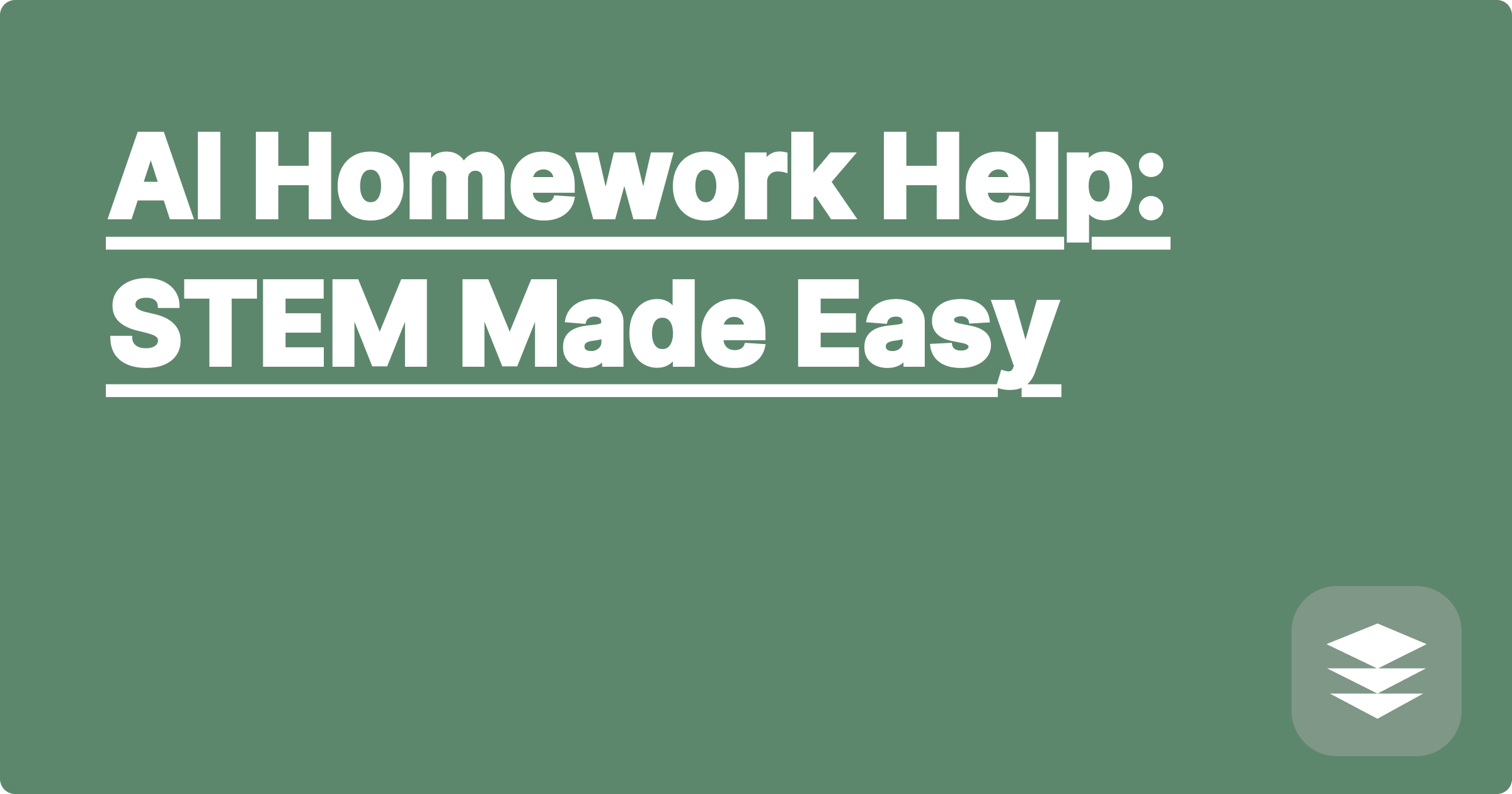
The demanding world of STEM education and research often presents complex challenges that can feel overwhelming for students and even seasoned researchers. Navigating intricate concepts, tackling difficult problem sets, and conducting in-depth analysis requires significant time, effort, and resources. Fortunately, the rapid advancement of Artificial Intelligence (AI) offers a powerful new set of tools to help alleviate these burdens and make STEM learning more accessible and efficient. AI can provide personalized support, automate tedious tasks, and offer new perspectives on complex problems, ultimately empowering STEM learners and researchers to reach their full potential.
This new paradigm shift in STEM learning is particularly relevant in today’s fast-paced academic and research environment. Students face increasing pressure to excel in highly competitive fields, while researchers strive to push the boundaries of knowledge and innovation. AI-powered tools can be a game-changer, offering a valuable resource to enhance understanding, accelerate progress, and unlock new possibilities. Embracing these tools can equip STEM learners and researchers with the skills and knowledge necessary to thrive in the 21st century.
STEM fields often involve complex problem-solving that requires a deep understanding of underlying concepts and principles. Students and researchers frequently encounter challenges related to grasping complex theories, applying abstract concepts to real-world scenarios, and efficiently processing large datasets. These challenges can be compounded by limited access to resources, time constraints, and the sheer volume of information to be absorbed. For instance, understanding the nuances of quantum mechanics or applying advanced statistical models to biological data can be particularly daunting. Furthermore, the constantly evolving nature of STEM fields requires continuous learning and adaptation, adding another layer of complexity to the learning process.
AI tools like ChatGPT, Claude, and Wolfram Alpha offer powerful capabilities to address the challenges inherent in STEM learning and research. These tools can be leveraged to clarify complex concepts, provide step-by-step solutions to intricate problems, and even generate code for specific tasks. ChatGPT and Claude, for example, excel at explaining complex topics in a conversational and accessible manner. They can break down intricate concepts into smaller, more manageable chunks, providing personalized explanations tailored to the user’s level of understanding. Wolfram Alpha, on the other hand, is particularly adept at handling computational tasks, symbolic calculations, and data analysis. It can quickly generate solutions to complex equations, perform statistical analyses, and even provide visualizations of data, freeing up valuable time for students and researchers to focus on higher-level thinking and analysis.
Let's consider a scenario where a student is struggling to understand the concept of eigenvalues and eigenvectors in linear algebra. The student can begin by posing a question to ChatGPT, such as "Explain eigenvalues and eigenvectors in simple terms." ChatGPT will then generate a clear and concise explanation, often accompanied by illustrative examples. Next, the student can ask for specific examples or practice problems. ChatGPT can generate these on demand, tailoring the difficulty level to the student's needs. If the student needs help solving a specific problem, they can input the problem into Wolfram Alpha, which can provide the solution along with step-by-step explanations of the calculations involved. Finally, the student can use Claude to summarize the key concepts and generate practice questions to reinforce their understanding. This iterative process of questioning, exploring, and practicing allows students to actively engage with the material and develop a deeper understanding of complex concepts.
Consider a researcher working on a project involving image processing. They need to implement a specific algorithm for edge detection in images. Instead of spending hours writing code from scratch, the researcher can use ChatGPT to generate code snippets in Python or other programming languages. For instance, they could prompt ChatGPT with "Generate Python code for Canny edge detection using OpenCV." ChatGPT can then provide the required code, which the researcher can adapt and integrate into their project. Another example involves a student struggling with a calculus problem involving integration. They can input the integral into Wolfram Alpha, which will not only provide the solution but also show the steps involved in the integration process. This allows the student to understand the underlying principles and learn how to solve similar problems in the future. Furthermore, if the student needs to visualize a complex mathematical function, they can use Wolfram Alpha to generate a 3D plot, providing a visual representation that enhances their understanding.
To effectively leverage AI tools in STEM education and research, it is essential to develop a strategic approach. First, clearly define the specific problem or task you are trying to solve. This will help you choose the right AI tool and formulate effective prompts. Second, experiment with different AI tools to discover which ones best suit your learning style and research needs. Each tool has its strengths and weaknesses, so exploring various options can be beneficial. Third, don't rely solely on AI for answers. Use AI as a supplement to your learning and research, not as a replacement for critical thinking and independent analysis. Always verify the information provided by AI tools and strive to understand the underlying concepts. Fourth, focus on understanding the process, not just the answer. AI tools can provide solutions, but it's crucial to understand the steps involved to develop true mastery of the subject matter. Finally, use AI to enhance your creativity and explore new ideas. AI can generate novel perspectives and suggest alternative approaches, sparking new avenues for research and innovation.
Concluding, AI-powered tools offer a transformative potential for STEM education and research. By understanding the capabilities of these tools and employing them strategically, students and researchers can overcome challenges, enhance their learning, and accelerate their progress. Embrace these powerful tools and explore the myriad ways they can empower you to achieve your academic and research goals. The future of STEM learning is here, and it's powered by AI.
AI Homework Help: STEM Made Easy
Ace STEM Exams: AI Study Guide
AI for Lab Reports: Data Analysis
AI: Your Physics Homework Solver
Engineering AI: Boost Your GPA